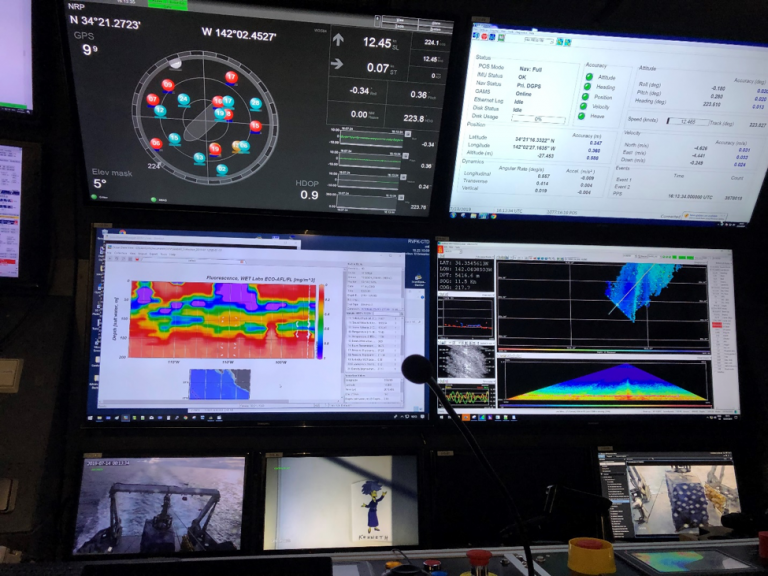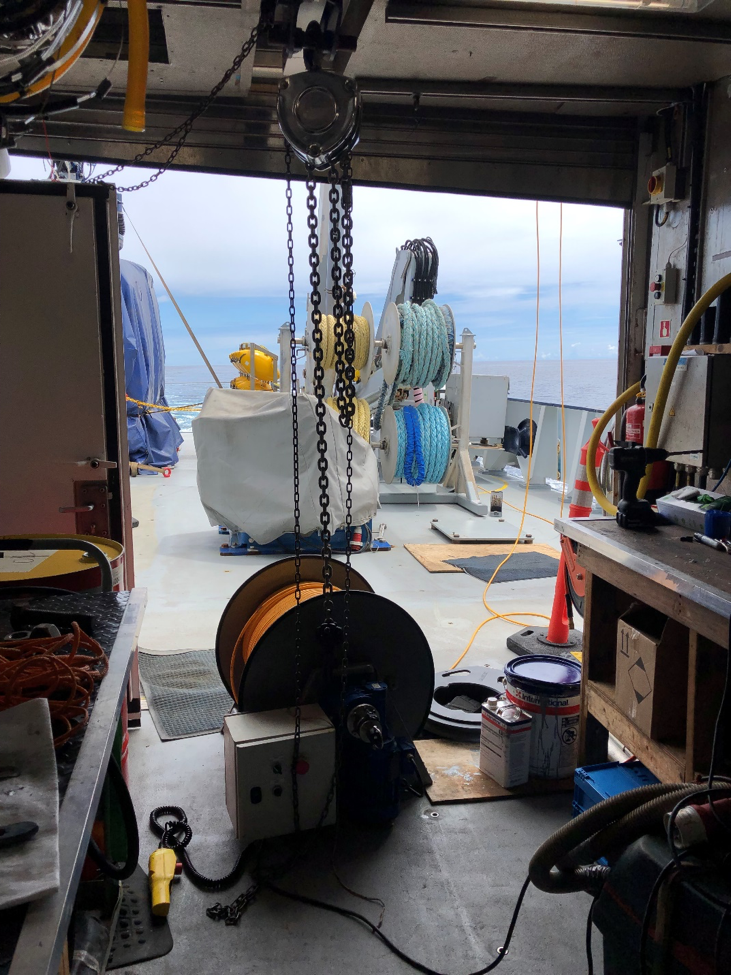It has been smooth sailing the past couple days on our transit to Hawaii. Along the way, I have had the opportunity to help out the marine technicians on various maintenance and data collection methods. Each task different than the one before – I have realized the numerous trades marine technicians must learn to fulfill their job requirements. While I have a marine science background, not all the technicians do. They come from psychology, deck, computer science, and hydrology expertise. By day four, I witnessed tasks involving plumbing, carpentry, computer sciences, oceanography, engineering, and deck capabilities.
The Oceanographic Expertise
Of course from the oceanographers’ standpoint, highlights of this week still remain with the multibeam sonar. The multibeam sonar has been running for the entirety of the cruise, and the technicians have never failed to provide more and more insight about the device and its application. Over time, the chemistry and physical properties of the water column change. This change in properties usually indicates a change in speed at which sound travels through the water. Knowing the speed of sound in the water column is vital to multibeam data because the speed at which sound travels to the seafloor and returns to the transducer signals the depth of the water column. To determine the sound velocity profile for the water body, the Falkor uses an XBT, or an expendable bathythermograph. The device is launched from the aft deck and transmits temperature, salinity, and depth data back to the science control room. The profile is applied to the multibeam data and provides a more accurate scan.

Master Plumbers
For this cruise, the marine technicians’ goals are to improve and replace the flow through system used to monitor water quality of the surface while underway.

The system includes a fluorimeter, pH meter, and thermosalinograph. The thermosalinograph takes temperature and conductivity data. Using the conductivity data, the instrument can calculate salinity. Therefore, all the while the ship is underway, the system is constantly taking data which is quite unique. However, the flow through system remodel requires plumbing expertise. The technicians are on the job and, from my point of view, seem like experts. They predict by the end of the transit the flow through system will be remounted on the wall and ready to go for when the next science party boards.
Computer genius
A large part of the job as a marine technician seems to be data management. Think about it: aboard this ship there are several instruments and machines taking in data all the while the vessel is in transit. Everything from the time, to GPS ,to ROV SuBastian requires space to store milliona and millions of bytes of data. While the scientific data system aboard the vessel is very impressive and always hard at work, the massive, hundred plus terabyte storage for all of this archived data requires a massive amount of organization and maintenance. Marine technicians work closely with the Systems Engineer to ensure all data traffic throughout the ship is without disruption and all data is available to all science party and crew aboard.

Hard working engineers
And to top off the capabilities of marine techs, I will add engineering to the list.
Marine techs have a great amount of creativity when it comes to problem-solving aboard their ship. Aboard the R/V Falkor, you can not simply run off the ship to a hardware store expecting to pick up the exact part they require; they must acclimatize to the situation and make what they have work. This afternoon’s task for the department was to prepare the magnetometer, known as “Maggie,” for deployment tomorrow night over the Fomos Seamount. Multiple pieces of equipment required for deployment of Maggie were not available, so the technicians had to modify the plate on which the winch sat. While the current setting in which the winch is placed is not perfect, the device will be ready for deployment tomorrow afternoon, and all thanks to the marine technicians and the many capabilities they have mastered.

